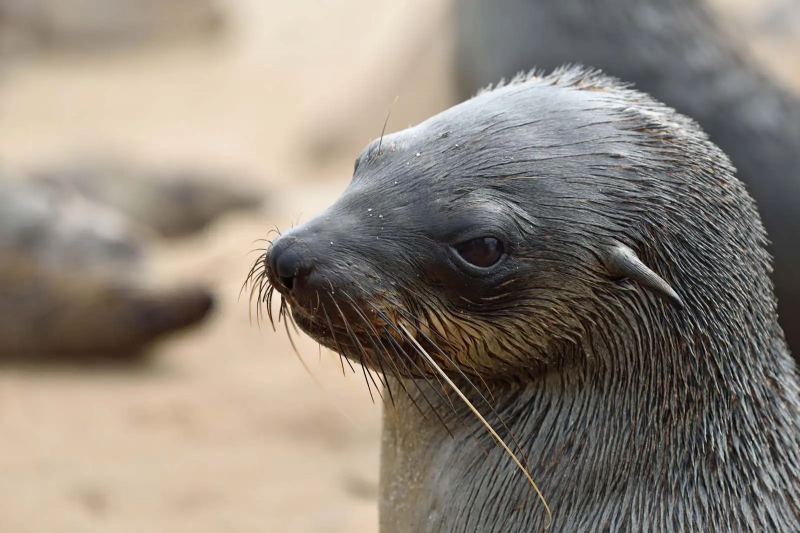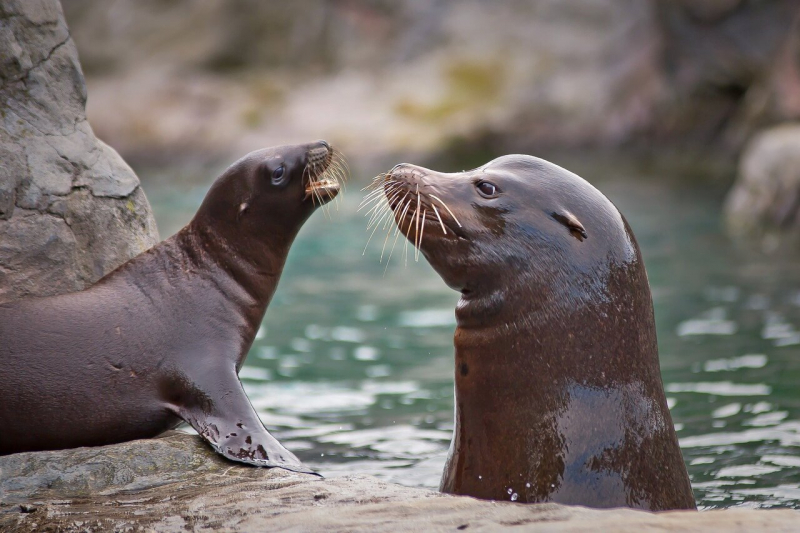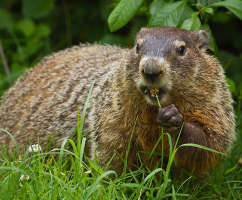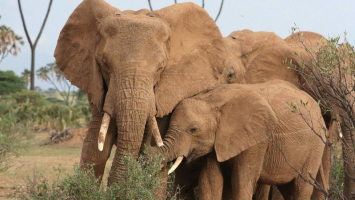Top 8 Predators of Sea Otters that Eat Sea Otter
Native to the eastern and northern regions of the North Pacific Ocean are the sea otters. Sea otters prefer to live only in the water, even though they can ... read more...walk well on land. Sea otters live in areas close to shore, diving to the ocean floor to find food. Sea urchins are their preferred food, however, they mostly feed on marine invertebrates. Sea otters, like many other species, seek protection in numbers. However, did you know that sea otters are also preyed upon by other creatures? Predators of sea otters that eat sea otters are listed below.
-
Prior to reaching a length of 3 m (9.8 ft) or more, when their jaw cartilage mineralizes enough to withstand the impact of biting into larger prey species, juvenile white sharks primarily feed on fish, including other elasmobranchs. This is because their jaws are not strong enough to withstand the forces required to attack larger prey species like pinnipeds and cetaceans.
White sharks start primarily pursuing marine animals for feeding as they reach a length of around 4 m (13 ft), while various sharks appear to specialize in different kinds of prey depending on their preferences. They have a strong sense of opportunism. These sharks favor food that is rich in fatty acids, which provide energy.
Especially in California, white shark attacks are the main cause of mortality for sea otters. It's interesting to note that the predators don't eat the otters. Although this is true, more than half of sea otter deaths now are caused by shark attacks. As a result, there are much fewer sea otters now living along the Californian coast, which has conservationists worried. Why white sharks would attack sea otters when they don't eat them has been a mystery to scientists. They discovered that predators just confuse otters for other, more nutrient-dense prey, such sea lions and seals. White sharks don't recognize their error until after attacking the sea otters.

Photo: Daily Mail - Sea otter was eaten by a white shark 
Photo: BBC - White sharks -
Although they may engage in significant foraging at night, brown and American black bears are typically diurnal, which means that they spend the majority of their time awake during the day. While female sloth bears with cubs may consume more during the day to avoid competition from conspecifics and nocturnal predators, other species may be nocturnal, active at night. The majority of bears are solitary, and they are thought to be the most asocial Carnivora. Only moms with young or sporadic seasonal surpluses of tasty food cause bears to be seen in groups. Males can fight, and elderly people may have severe scarring, which shows that sustaining dominance might be quite difficult. Bears have a keen sense of smell and may find carcasses up to a few kilometers away. They utilize olfaction to find new meals, meet partners, stay away from rivals, and identify their pups.
Ever since the US government labeled otters an endangered species and began protecting them, their number has been growing. Due to its growth, it now faces competition from brown bears for clams. Brown bears, who are extremely adaptive, have started to hunt on sea otters as a result of this rivalry. Although many bears are willing to scavenge dead otters, others have grown to like fresh otter flesh over time.
Photo: Wikipedia - Bear 
Photo: Exodus Travels - Bear -
Any marine mammal belonging to the Otariidae family, one of three subfamilies of pinnipeds, is an eared seal. To distinguish them from real seals (phocids) and walrus, they consist of 15 current species in seven genera, with one species going extinct in the 1950s. They are also known as sea lions or fur seals (odobenids). The semiaquatic lifestyle of otariids allows them to reproduce and rest on land or ice while eating and traveling in the water. In the Pacific and Southern Oceans, as well as the southern Indian and Atlantic Oceans, they live in subpolar, temperate, and equatorial waters. In the north Atlantic, they are noticeably lacking.
Otariids are far more agile on land than phocids because they can bend their hind limbs forward and move on all fours, as well as having proportionately bigger foreflippers and pectoral muscles than phocids. Since they usually reproduce on land and haul out more regularly than real seals, they are typically seen as being less adapted to an aquatic lifestyle.
A distinctive feature of eared seals is their prominent ears and flippers. They have external ear flaps, which sets them apart from real seals. In addition to eating sea otters, eared seals also eat fish, lobsters, crabs, crustaceans like shrimp, and krill, an animal that closely resembles a shrimp.

Photo: ThoughtCo - eared seals 
Photo: Salish Sea News and Weather - eared seal -
Pinnipeds known as sea lions have large chests and bellies, external ear flaps, lengthy foreflippers, the ability to move on all fours, and short, dense hair. They make up the family Otariidae, or eared seals, together with fur seals. There are five genera and six living species of sea lions, including one extinct species (the Japanese sea lion). With the remarkable exception of the northern Atlantic Ocean, their distribution spans the subarctic to tropical seas of the entire world's oceans in both the Northern and Southern Hemispheres. They often live for 20 to 30 years.
The physiology of sea lions is made up of a variety of parts, and these mechanisms govern some aspects of their behavior. Thermoregulatory, osmoregulatory, reproductive, metabolic, and many other elements of sea lion ecology, including but not limited to their capacity for deep diving, are all governed by physiology. The bodies of sea lions regulate blood flow, digestive rate, gas exchange, and heart rate to allow people to dive for extended periods of time without experiencing the negative consequences of high pressure at deep.
Another significant predator of sea otters is the sea lion. The majority of sea lions consume a variety of seafood and are not fussy eaters. Their nutrition varies regionally and has undergone tremendous modification throughout time. Squids, whiting, lamprey, herring, dogfish, anchovies, rockfish, sand lance, arrowtooth flounder, salmon, and clams are among the other species that sea lions eat in addition to sea otters. They also eat crabs, birds, cephalopods, and occasionally other pinnipeds. Californian sea lions frequently interact with other animals, such seabirds and dolphins, when eating.

Photo: Wild View - Wildlife Conservation Society - Sea Lion 
Photo: Phys.org - Sea lion -
Although different populations of orcas sometimes specialize on certain kinds of prey, orcas have a varied diet. Some dolphin species just consume fish, while others hunt seals and other dolphin species. Baleen whale calves and even adults have been known to be attacked by them. Due to the lack of any other natural predators, orcas are apex predators. They are very sociable, and certain populations are made up of the most stable matrilineal family units (pods) of any animal species. They have been referred to as representations of animal culture because of their complex hunting methods and vocal behaviors, which are frequently unique to a single group and passed down through generations.
Sea otters haven't always been a meal for orcas. Sea lions and seals have traditionally been their preferred prey. The population of these two, however, has significantly decreased. Sea otters have become the whales' go-to source of food as sea lions and seals are no longer as common as they once were, particularly in the North Pacific. The population of sea otters has decreased as a result, particularly in western Alaska. Because sea otters are their primary predator throughout this drop, sea urchin populations have increased. Kelp densities have decreased due to the rise in sea urchin numbers. As a result, the kelp forest ecology is slowly dying.

Photo: TIME for Kids - Awesome Orcas 
Photo: New Scientist - Orcas -
Bald eagles are also one of the predators of sea otters that eat sea otters. Bald eagles Almost any type of American wetland environment, including seacoasts, rivers, sizable lakes or marshes, or other sizable bodies of open water with an abundance of fish, is where you may see bald eagles during their nesting season. Lakes with an area larger than 10 km2 (4 sq mi) are ideal for bald eagle nesting, according to studies, while bodies of water with a diameter bigger than 11 km (7 mi) are preferred. Old-growth and mature stands of coniferous or hardwood trees are often needed by bald eagles for perching, roosting, and breeding. According to reports, the height, make up, and placement of the tree are more crucial to the eagle couple than its species. Off the coast of Alaska, the Aleutian archipelago is home to a large population of bald eagles. They build their nests on islands, coastal cliffs, and sea stacks. Over 90% of the food consumed by bald eagles comes from the water.
Near the islands, sea otters previously dominated the aquatic ecosystems around the shore. The principal predator of sea otters, the bald eagle, has caused a sharp drop in the population of sea otters in recent years. In the past, sea otter pups and fish from kelp forests made up the majority of the diet of bald eagles. Bald eagles, on the other hand, must now rely on marine food due to the reduction in sea otter populations. Bald eagles have been forced to modify their feeding strategies and shift their focus to other areas in response.
Photo: Time Out - Bald eagle 
Photo: iStock - Bald Eagle -
One of the biggest predators of sea otters that eat sea otters is coyotes. Coyotes, members of the canine family, used to predominately inhabit deserts and plains. They now traverse the mountains and forests of the American continent. They are present throughout most of North America and have even managed to dominate cities like Los Angeles. Coyotes have keen vision and a keen sense of smell. They are excellent hunters since they can run at 40 mph. Coyotes establish groups to increase the efficiency of their hunting throughout the winter and autumn.
The coyote is sociable like the Eurasian golden jackal, but it is not as reliant on conspecifics as more social canid species like wolves are. This is most probable because, unlike the later species, coyotes do not specialize on hunting huge animals. A family that includes a female in reproductive age is the fundamental social unit of a coyote pack. Unrelated coyotes could band together, though, either for companionship or to hunt down prey that is too big for them to take on alone.
In addition to sea otters, coyotes also consume deer, frogs, fish, rodents, and rabbits. In addition, they eat fruit, grass, carrion, and snakes. Because they destroy calves, lambs, and other animals in addition to pets, many farmers and ranchers view them as harmful pests.
Photo: CTV News Edmonton - Coyote 
Photo: The Canadian Encyclopedia - Coyote -
The sea otter was killed in the 17th and 18th centuries for its priceless pelt. The population rapidly decreased since hunting was not regulated. It was too late, even though the international community ultimately took note and outlawed sea otter commercial hunting in 1911 (Environment Canada, 2011). The final sea otter in Canada was shot and killed around 20 years later. There would not have been a need for a reintroduction strategy, and the population number would have been steady and probably at carrying capacity if it weren't for this horrible exploitation of the sea otters.
Fur is used by people to create crafts. Over time, humans have modified how they hunt otters. They would first utilize arrows and handmade weapons. Later, during the peak of the animal hunt, traps and weapons were invented. Nowadays, most people hunt them using traps.
Some hunters pursue otters only for the excitement of taking one down. Otters are seen as rivals by some, including commercial fisherman, who want to limit their catch. So that they can't consume the fish and other marine life, they kill otters. Otters do, however, occasionally become tangled in fishermen's nets.
Photo: Outside Magazine - a man catches sea otter 
Photo: Biodiversity of the Central Coast - Sea otter was killed





























